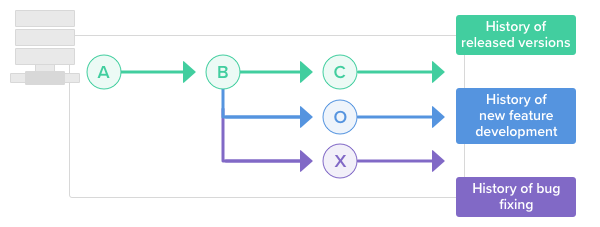

A branch is essentially is a unique set of code changes with a unique name. The way git, and GitHub, manage this timeline - especially when more than one person is working in the project and making changes - is by using branches. Essentially creating a timeline of versions of a project as it progresses, so that you can roll back to an earlier version in the event disaster strikes. Or at least not disastrous.īy now you understand that git saves each version of your project as a snapshot of the code exactly as it was at the moment you committed it.

Now it is time to start actually working with GitHub (and git) the way they are meant to be used: making changes in the project safely off to one side, and merging them back into the original project once they have proved to be correct. In our previous tutorials for the git version control software, we learned the essential basic commands for using git, as well as how to work with to establish a repository and push our project code to the website.


 0 kommentar(er)
0 kommentar(er)
